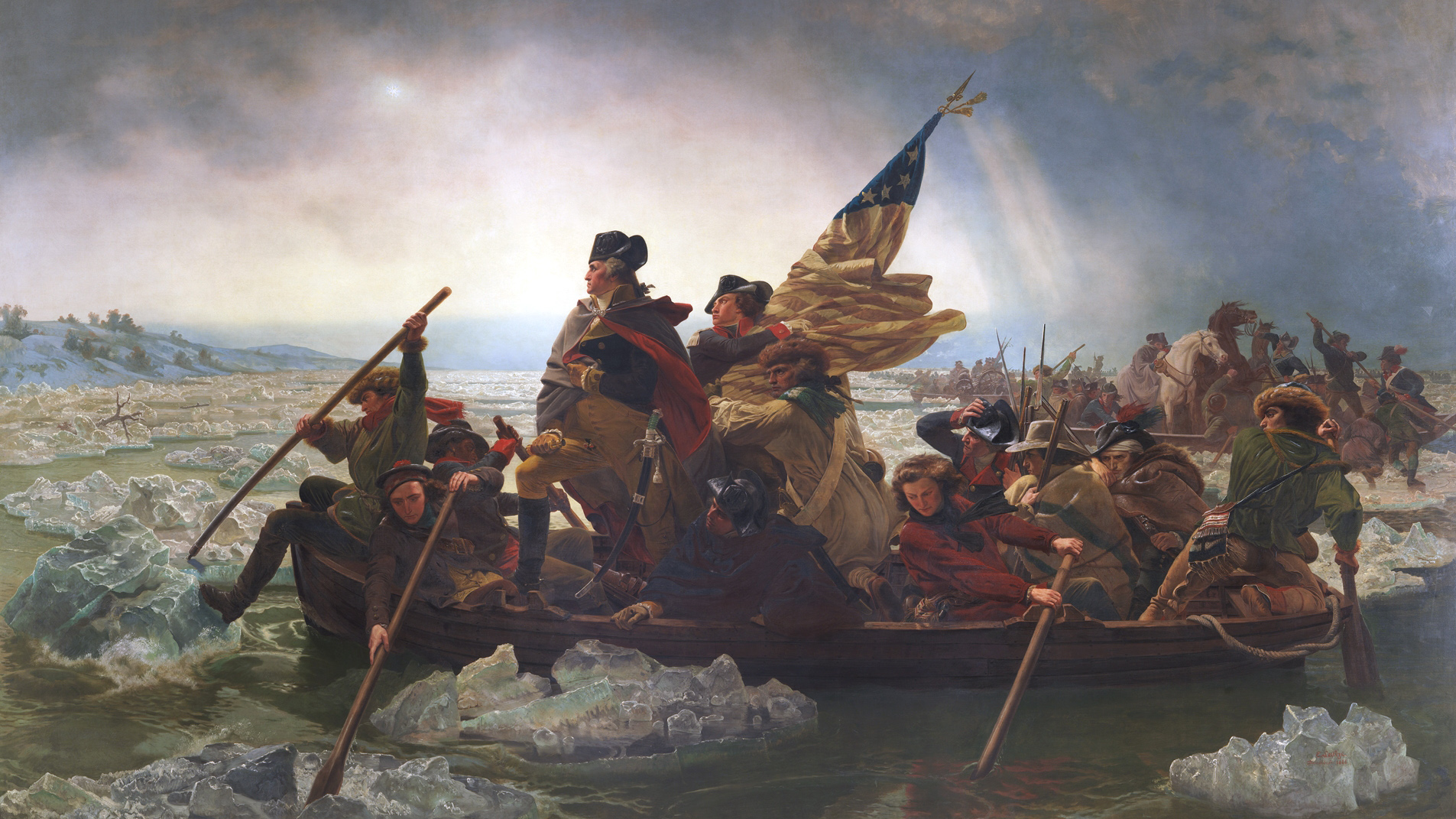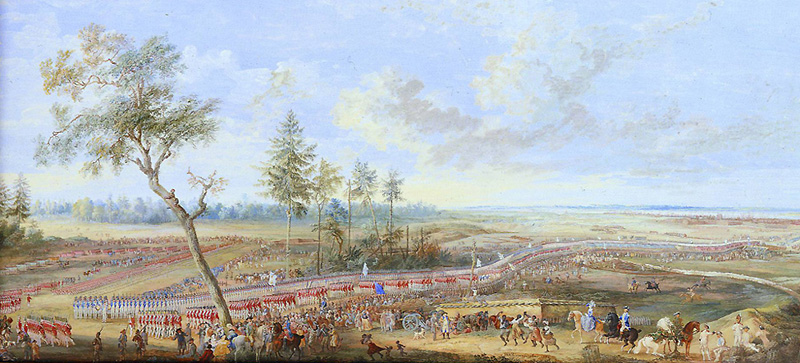Test your knowledge with a quiz
Armstead, Surrender Yorktown
Key points
- The British defeat at Yorktown was a decisive victory in the American Revolutionary War, made possible through the combined efforts of the American Continental Army (led by George Washington) and the French Army and Navy. This drawing is based on Louis-Nicolas van Blarenberghe’s painting, The Surrender of Yorktown (1786), which was commissioned by King Louis XVI to celebrate the victory.
- Kenseth Armstead’s drawing technique highlights his creative process in order to remind the viewer that historical images are constructions that must be made. Armstead points out that neither van Blarenberghe nor his patron had ever been to America. The original painting creates an illusion of the event that is pure fantasy, but makes it seem like we’re looking at the truth.
- In his work, Armstead removed the fictional elements of van Blarenberghe’s painting, which results in an empty and desolate landscape where a massive battle had taken place. This emptiness points out that truths often go missing from historical depictions, notably the contributions of enslaved African-Americans who made up 20% of the soldiers fighting in the Revolutionary War. Armstead wants us to realize that all histories are incomplete.
Go deeper
See this image at the Newark Museum of Art
Explore three primary sources that describe the surrender of General Cornwallis at Yorktown
Learn more about Kenseth Armstead at the artist’s website
More to think about

Emanuel Leutze, Washington Crossing the Delaware, 1851, oil on canvas, 378.5 x 647.7 cm (Metropolitan Museum of Art)
Kenseth Armstead erases a conventional historical rendering of the Battle of Yorktown, both to call our attention to the constructed and highly invented nature of history painting and to suggest the realities omitted from these accounts. Working in small groups, take a critical look at Emmanuel Leutze’s iconic Washington Crossing the Delaware. What elements of this painting might not be historically accurate? What changes would you make to create a more truthful version?
Today, photographs are frequently used to record historical moments and commemorate public events. Discuss with a classmate whether you think photographs can be trusted to present truthful accounts. Find an example of a news photograph and look at it critically for ways the image may skew or manipulate the viewer’s understanding of what really happened.



